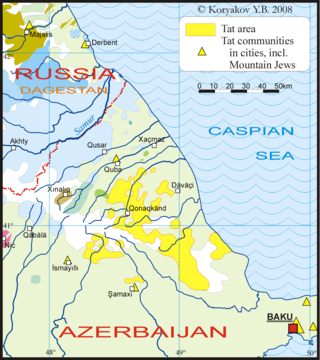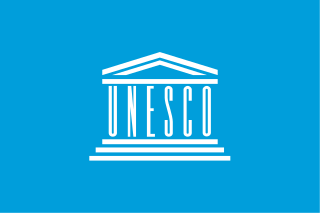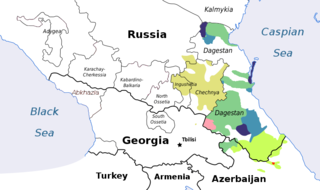
Brahui is a Dravidian language spoken by the Brahui people who are mainly found in the central Balochistan Province of Pakistan, with smaller communities of speakers scattered in parts of Iranian Baluchestan, Afghanistan, and Turkmenistan and by expatriate Brahui communities in Iraq, Qatar, and the United Arab Emirates. It is isolated from the nearest Dravidian-speaking neighbouring population of South India by a distance of more than 1,500 kilometres (930 mi). The Kalat, Khuzdar, Mastung, Quetta, Bolan, Nasirabad, Nushki, and Kharan districts of Balochistan Province are predominantly Brahui-speaking.

Gascon is the vernacular Romance variety spoken mainly in the region of Gascony, France. It is often considered a variety of Occitan, although some authors consider it a different language.

An endangered language or moribund language is a language that is at risk of disappearing as its speakers die out or shift to speaking other languages. Language loss occurs when the language has no more native speakers and becomes a "dead language". If no one can speak the language at all, it becomes an "extinct language". A dead language may still be studied through recordings or writings, but it is still dead or extinct unless there are fluent speakers. Although languages have always become extinct throughout human history, they are currently dying at an accelerated rate because of globalization, mass migration, cultural replacement, imperialism, neocolonialism and linguicide.

Western Armenian is one of the two standardized forms of Modern Armenian, the other being Eastern Armenian. It is based mainly on the Istanbul Armenian dialect, as opposed to Eastern Armenian, which is mainly based on the Yerevan Armenian dialect.
Lezgian, also called Lezgi or Lezgin, is a Northeast Caucasian language. It is spoken by the Lezgins, who live in southern Dagestan (Russia); northern Azerbaijan; and to a much lesser degree Turkmenistan; Uzbekistan; Kazakhstan; Turkey, and other countries. It is a much-written literary language and an official language of Dagestan. It is classified as "vulnerable" by UNESCO's Atlas of the World's Languages in Danger.

Svan is a Kartvelian language spoken in the western Georgian region of Svaneti primarily by the Svan people. With its speakers variously estimated to be between 30,000 and 80,000, the UNESCO designates Svan as a "definitely endangered language". It is of particular interest because it has retained many features that have been lost in the other Kartvelian languages.
ǃOrakobab or Khoemana, also known as Korana, ǃOra, or Griqua, is a moribund Khoe language of South Africa.
Angami is a Naga language spoken in the Naga Hills in the northeastern part of India, in Kohima district, Nagaland. In 2011, there is an estimate of 153,000 first language (L1) Angami speakers. Under the UNESCO's Language Vitality and Endangerment framework, Angami is at the level of "vulnerable", meaning that it is still spoken by most children, but "may be restricted to certain domains".

Tat, also known as Caucasian Persian, Tat/Tati Persian, or Caucasian Tat, is a Southwestern Iranian language closely related to, but not fully mutually intelligible with Persian and spoken by the Tats in Azerbaijan and Russia. There is also an Iranian language called Judeo-Tat spoken by Mountain Jews.
Basaa, or Mbene, is a Bantu language spoken in Cameroon by the Basaa people. It is spoken by about 300,000 people in the Centre and Littoral regions.

The UNESCO Atlas of the World's Languages in Danger was an online publication containing a comprehensive list of the world's endangered languages. It originally replaced the Red Book of Endangered Languages as a title in print after a brief period of overlap before being transferred to an online only publication.
Tsakhur is a Lezgic language spoken by the Tsakhurs in northern Azerbaijan and southwestern Dagestan (Russia). It is spoken by about 11,700 people in Azerbaijan and by about 10,600 people in Russia. The word Tsakhur derives from the name of a Dagestani village where speakers of this language make up the majority.
Cantabrian is a vernacular Romance linguistic variety, most often classified as part of the Asturleonese linguistic group. It is indigenous to the territories in and surrounding the Autonomous Community of Cantabria, in Northern Spain. The language is currently relegated to the rural dialects, while most of the population speaks a more or less standard version of Spanish.

Vivaro-Alpine is a variety of Occitan spoken in southeastern France and northwestern Italy. There is also a small Vivaro-Alpine enclave in the Guardia Piemontese, Calabria, where the language is known as gardiòl. It belongs to the Northern Occitan dialect bloc, along with Auvergnat and Limousin. The name “vivaro-alpine” was coined by Pierre Bec in the 1970s. The Vivaro-Alpine dialects are traditionally called "gavot" from the Maritime Alps to the Hautes-Alpes.

Rutul or Rutulian is a Lezgic language spoken by the spoken by the Rutuls, an ethnic group living in Dagestan (Russia) and some parts of Azerbaijan. It is spoken by 30,000 people in Dagestan and 17,000 in Azerbaijan. The word Rutul derives from the name of a Dagestani village where speakers of this language make up the majority.

Khinalug (also spelled Khinalig, Khinalugi, Xinalug(h), Xinaliq or Khinalugh) is a Northeast Caucasian language spoken by about 3,000 people in the villages of Khinalug and Gülüstan, Quba in the mountains of Quba Rayon, northern Azerbaijan. It forms its own independent branch within the Northeast Caucasian language family.
Willem F. H. Adelaar is a Dutch linguist specializing in Native American languages, specially those of the Andes. He is a Professor of Indigenous American Linguistics and Cultures at Leiden University.
The Kuku Nyungkal dialect is an Australian Aboriginal language and the language of the Kuku Nyungkal people of Far North Queensland. It is a variety of Kuku Yalanji still being spoken. Most of the speakers today live in the communities of Wujal Wujal and Mossman.
Faetar, fully known as Faetar–Cigliàje, is a variety of the Franco-Provençal language that is spoken in two small communities in Foggia, Italy: Faeto and Celle di San Vito, as well as émigré communities in Ontario, Canada.











